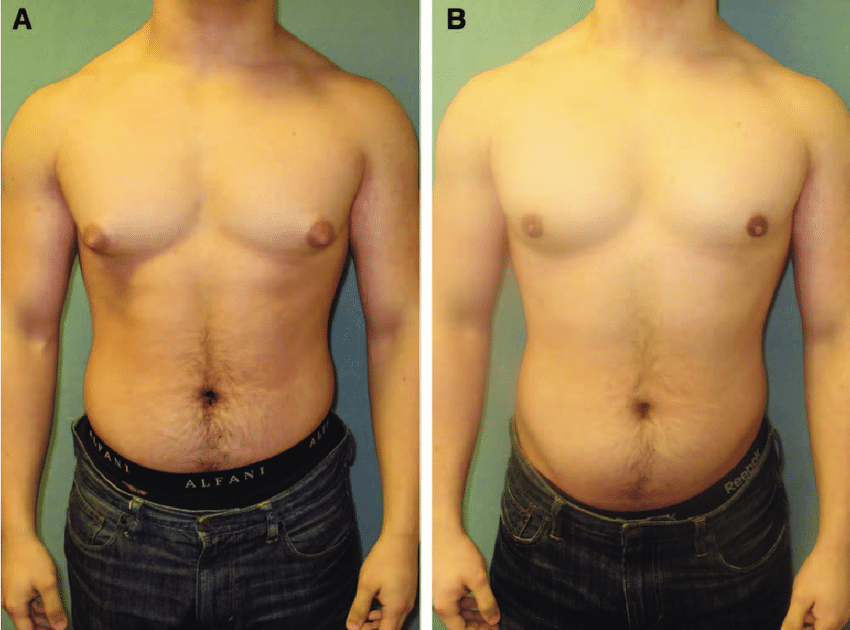Gynecomastia Acupuncture
by Admin
Posted on 10-12-2024 01:33 PM

What is Gynecomastia?
Gynecomastia is a common condition that affects men of all ages, resulting from an imbalance of estrogen and testosterone levels. This hormonal imbalance can stem from various factors, including puberty, aging, certain medications, and health conditions. The symptoms of gynecomastia can range from mild breast tenderness to noticeable breast enlargement, often causing emotional distress and impacting self-esteem. Understanding the causes and symptoms of gynecomastia is crucial in exploring effective treatment options, including the potential role of acupuncture.
Understanding Acupuncture
Acupuncture is a form of traditional Chinese medicine that involves the insertion of thin needles into specific points on the body. It is based on the concept that the body has a vital energy, or "qi," which flows through it along specific pathways, or meridians. By stimulating these points, acupuncture aims to restore the flow of qi, thereby promoting health and treating disease. This holistic approach considers the interconnectedness of physical, emotional, and spiritual aspects of an individual, offering a unique perspective on health and wellness.
Mechanism of Acupuncture in Treating Gynecomastia
The application of acupuncture in treating gynecomastia is grounded in its potential to influence hormonal balance and improve the body's overall energy. By targeting specific acupoints related to endocrine function and energy regulation, acupuncture may help in adjusting the levels of estrogen and testosterone, thereby reducing the symptoms of gynecomastia. Furthermore, acupuncture's role in enhancing blood circulation and promoting lymphatic drainage may also contribute to reducing breast tissue swelling.
The Role of Hormonal Balance
Hormonal balance is critical in the development and treatment of gynecomastia. Acupuncture, through its effects on the endocrine system, may help in regulating the production of hormones, including estrogen and testosterone. This regulation can potentially mitigate the hormonal imbalances that contribute to gynecomastia, offering a non-invasive and natural approach to managing the condition.
Enhancing Overall Wellbeing
Beyond its potential effects on hormonal balance, acupuncture is also valued for its ability to enhance overall wellbeing. By promoting relaxation, reducing stress, and improving mood, acupuncture can help individuals cope with the emotional aspects of gynecomastia. This holistic approach to health can lead to improved self-esteem and quality of life, complementing the physical benefits of treatment.
Gynecomastia, a condition that affects many men, can be effectively treated with male breast reduction surgery, helping to restore a more masculine chest appearance and boost confidence.
Benefits and Risks of Acupuncture for Gynecomastia
While acupuncture offers a promising alternative for managing gynecomastia, it is essential to consider both its benefits and risks. The benefits include its non-invasive nature, potential for reducing symptoms without significant side effects, and its holistic approach to health. However, as with any medical treatment, there are risks, such as the possibility of infection or bruising at needle sites, and the importance of finding a qualified and licensed practitioner.
Clinical Evidence and Research
The clinical evidence supporting the use of acupuncture in treating gynecomastia is emerging, with some studies suggesting its potential benefits. However, more research is needed to fully understand its efficacy and optimal treatment protocols. As with any complementary therapy, it is crucial to approach acupuncture as part of a comprehensive treatment plan, under the guidance of healthcare professionals.
Conclusion
Gynecomastia acupuncture presents an intriguing option for those seeking alternative or complementary treatments for breast tissue enlargement. By addressing hormonal imbalances and promoting overall wellbeing, acupuncture may offer a valuable approach to managing gynecomastia. As research continues to explore its potential, individuals affected by this condition may find acupuncture to be a beneficial component of their treatment plan, fostering a more holistic and integrated approach to health.
FAQs
What is the success rate of acupuncture in treating gynecomastia?
The success rate can vary depending on individual circumstances and the severity of the condition. Some individuals may experience significant reduction in symptoms, while others may see more moderate improvements.
How many acupuncture sessions are typically required?
The number of sessions needed can vary, but a common range is between 10 to 20 sessions, depending on the individual's response to treatment and the severity of gynecomastia.
Are there any side effects of acupuncture for gynecomastia?
Common side effects are mild and may include bruising, soreness at needle sites, and temporary fatigue. Serious side effects are rare when treatment is provided by a licensed practitioner.
Can acupuncture be used in conjunction with other treatments for gynecomastia?
Yes, acupuncture can be used alongside other treatments, including hormone therapy and lifestyle changes, as part of a comprehensive approach to managing gynecomastia. It is essential to discuss this with healthcare providers to ensure coordinated care.
Michael Law MD Aesthetic Plastic Surgery
10941 Raven Ridge Rd #101,
Raleigh, NC 27614,
919-256-0900
